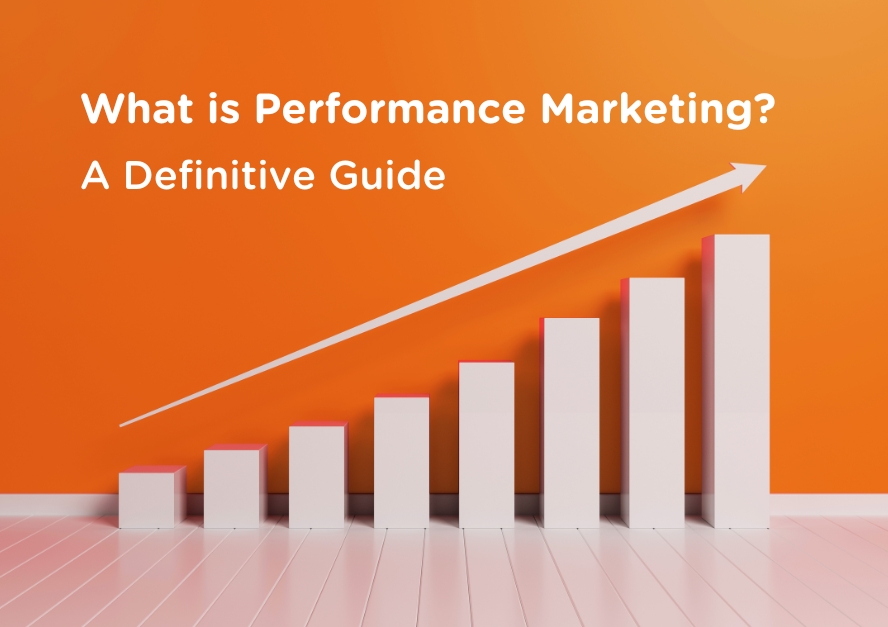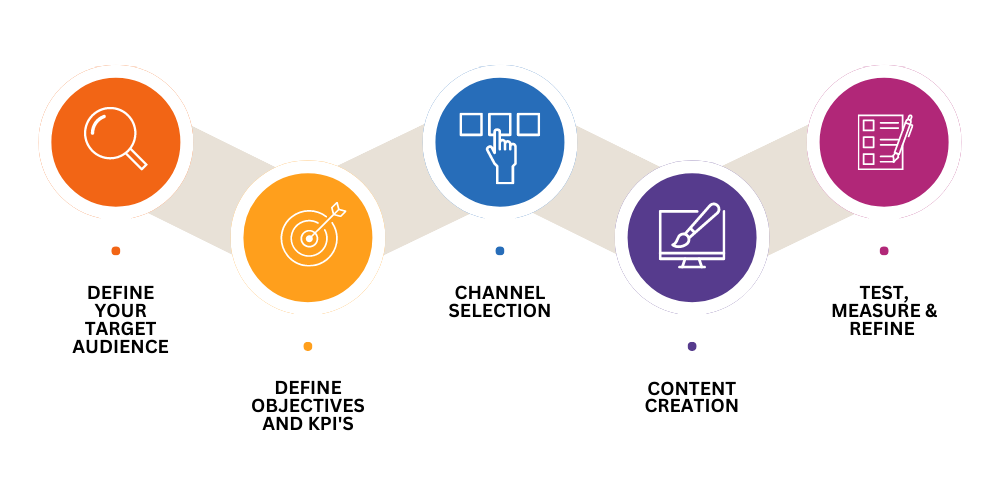What is Performance Marketing? A Definitive Guide
Liam Hall • 25th Apr 2023

Unlike traditional advertising models, where you pay for exposure, performance marketing is all about paying for measurable results. As an advertiser, you’ll only pay when a user takes an action that you’ve defined such as a click, conversion, or an impression, meaning that you (or your agency) can optimise campaigns to achieve the maximum return on investment. This approach allows you to be more strategic with your advertising budget and ensures that you’re getting the most value from your advertising spend. So, if you’re looking to level up your digital advertising game, continue reading and we’ll share everything you need to know about performance marketing.
So, What Exactly Is Performance Marketing?
The best definition we’ve found for performance marketing comes from industry heavyweight Neil Patel:
Performance marketing is essentially “results-based” marketing.
Neil Patel
Patel believes that performance marketing is a form of marketing that is centred around delivering measurable results. This means that success is measured by specific key performance indicators (KPIs) like conversions, sales, or clicks. Unlike traditional marketing methods, which focus on building brand awareness or visibility, performance marketing is all about delivering tangible outcomes that you can track and measure.
What Are the Main Performance Marketing Channels?
Now that we’ve got a solid understanding of what performance marketing is, let’s dive into the channels that are commonly utilised for this type of marketing. These channels are exclusively digital since we need to track them all the way from an ad being clicked to an action on the website. Although, there are changes underway as traditional media channels explore ways to add attribution, for now, performance marketing is primarily a digital game.
- Paid Search: paid search involves promoting your website through paid search ads on search engines like Google or Bing. This channel can be highly effective in driving targeted traffic to your site, as you only pay when someone clicks on your ad.
- Paid Shopping: Like paid search, with paid shopping you can display your products at the top of search results when someone searches for a related keyword. Unlike paid search the information displayed is pulled directly from a feed and includes an image of the product, price, and a brief description.
- Social Media Advertising: Social media platforms like Facebook, Instagram, Twitter & TikTok offer a range of advertising options and some of the most granular options for targeting. These ads can be highly targeted based on factors like age, location, interests, and more.
- Display Advertising: Display advertising involves placing banner ads on websites or apps. These ads can be highly targeted based on factors like demographics, interests, and browsing history as well as a range of curated 3rd party audiences.
- Retail Media: Retail media promotes products or brands in a retail environment. It drives sales and awareness, reaching consumers at the point of purchase. For instance, Tesco, Sainsbury’s, and Amazon offer advertising options based on search terms, product categories, and consumer behaviour.
Advantages of Performance Marketing
Measurable Results
The single biggest advantage of performance marketing is the ability to track and measure the effectiveness of campaigns, in real-time. By using advanced tracking tools, you can gain insights into the performance of your campaigns and adjust strategies accordingly (give or take a few days for learning). This ensures you only pay for activity that is driving results.
Cost-Effective
Performance marketing is a cost-effective way of advertising as you’ll only pay for specific actions taken by users, such as clicks or conversions. This means that you are not wasting money on ineffective advertising methods and can allocate budget more efficiently. Additionally, performance marketing campaigns can be scaled up or down at any point depending on budget and goals.
Targeted Advertising
The level of targeting available with performance channels is staggering. You can target users based on exactly what they’ve searched for, where they’re located, what they’re interested in, even based on websites they’ve recently visited (it can be a little bit creepy). This means that ads are seen by the right people at the right time, increasing the chances of cut-through and conversion.
Flexibility
Performance marketing campaigns can be adapted and adjusted quickly to suit changing market conditions or to test different strategies. This level of flexibility allows you to respond to consumer trends and preferences, ensuring that your ads remain relevant and effective.
Increased ROI
Performance marketing allows you to optimise campaigns for maximum ROI by focusing on specific actions that lead to conversions. By only paying for what you get, you can ensure that campaigns are cost-effective and drive better results.
Disadvantages of Performance Marketing
Short-Term Focus
Performance marketing is focused on achieving immediate results, such as clicks, conversions, or impressions. While this can be beneficial when you’re looking for quick wins, it can be detrimental to long-term brand-building efforts. According to Les Binet, an expert in advertising effectiveness, brands should aim for a 60/40 split between brand building and performance marketing, as brand-building efforts lead to more sustained growth over time.
‘Activation (performance marketing) is about getting an immediate response and, ideally, an immediate sale but maybe nothing more. Brand building is about getting a long-term flow of sales, revenue, and profit, now and into the future.’
Les Binet
Dependence on Data
Let’s talk about the love-hate relationship between performance marketing and data. Performance marketing loves data because it helps to optimise campaigns and maximise ROI, but sometimes it can be a little too much. Don’t let yourself get so caught up in chasing specific metrics that you forget about the big picture – your audience & your brand purpose.
Saturation of Online Advertising
As more businesses invest in performance marketing, the online advertising space is becoming increasingly crowded. This makes cut-through harder and harder to achieve. The big media platforms continue to push more and more ads into people’s feeds making it more important than ever that you have a great product or service and have nailed what your brand stands for.
Performance Marketing Process

Defining Your Target Audience
The first step is finding your ideal customer. Think of it like finding a treasure map that leads you straight to your target audience. By getting deep into your customers likes, dislikes, and other interests, you can create ads that address their specific pain points. This increases your chances of achieving the results you’re seeking. So, don’t be afraid to get specific when it comes to identifying your target audience.
Defining Objectives & KPIs
Defining objectives and KPIs is the second step in performance marketing. It involves setting specific performance goals that you want to achieve through the campaign. These goals could be anything from increasing website traffic to generating more leads or sales. By setting clear objectives and KPIs, you can measure the success of your campaigns and look to scale your activity in the future. Objectives and KPIs also provide a way to communicate the goals of the campaign to other stakeholders, ensuring everyone is on the same page.
Channel Selection
Once the target audience and objectives have been defined, it’s time to select the channels you want to use to reach your desired audience(s). The main thing to remember is that your channel mix must depend on the target audience and the goals of the campaign. Where do your audience spend their time? For example, if the target audience is primarily active on social media, you may focus on social media channels such as TikTok or Instagram. By selecting the right channels, you can drastically increase your chances of success and making sure your message reaches the audience you’ve identified.
Content Creation
After selecting the channels, you must create content that resonates with the target audience. This may include ad copy, images, or videos. The content should be tailored to the specific platform it will be displayed on, taking into account the format and size requirements. The assets you create have a big job to do, they need to stand out, grab your audience’s attention and encourage them to take action.
According to Meta’s data, users typically spend a mere 1.7 seconds viewing mobile content and 2.5 seconds on desktop. That’s not a lot of time to make an impression, so your content needs to grab their attention right away.
Test, Measure & Refine
Performance marketing is an iterative process that requires ongoing testing, measurement, and refinement. After launching the ad campaign, you must continuously monitor performance and adjust as needed. There is no ‘set it and forget it’ approach for performance activity. This could include A/B testing different ad variations, adjusting targeting, or changing bids and budget levels.
By testing and refining the campaign, you can improve its effectiveness and achieve better results over time. It is essential to have an ‘always on’ approach to testing, as this ensures the campaign is continually optimised for performance and that you’re always learning.
In conclusion, performance marketing has become an essential part of digital advertising, offering businesses a way to achieve their marketing objectives more efficiently and effectively. While there are some disadvantages to consider, the benefits of performance marketing are hard to ignore. By following the five key steps we outlined in this post, you can create successful performance marketing campaigns that achieve their objectives and drive business growth.
If you’re interested in learning more about how performance marketing can help your business, we’d be happy to arrange a chat with a member of our performance media team. Contact us and we’ll start planning how we can help your business grow.


